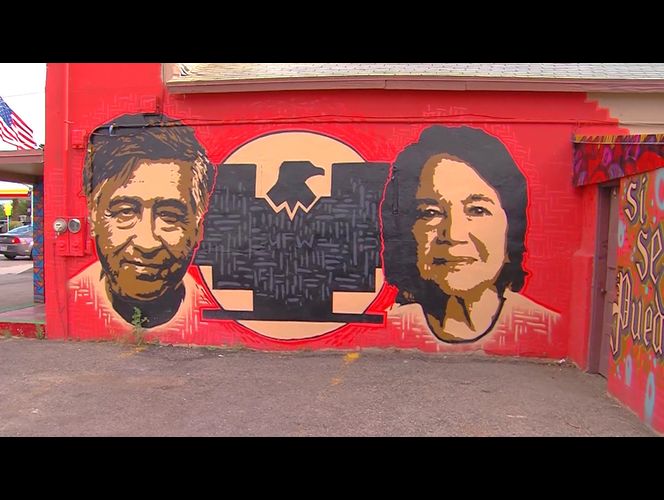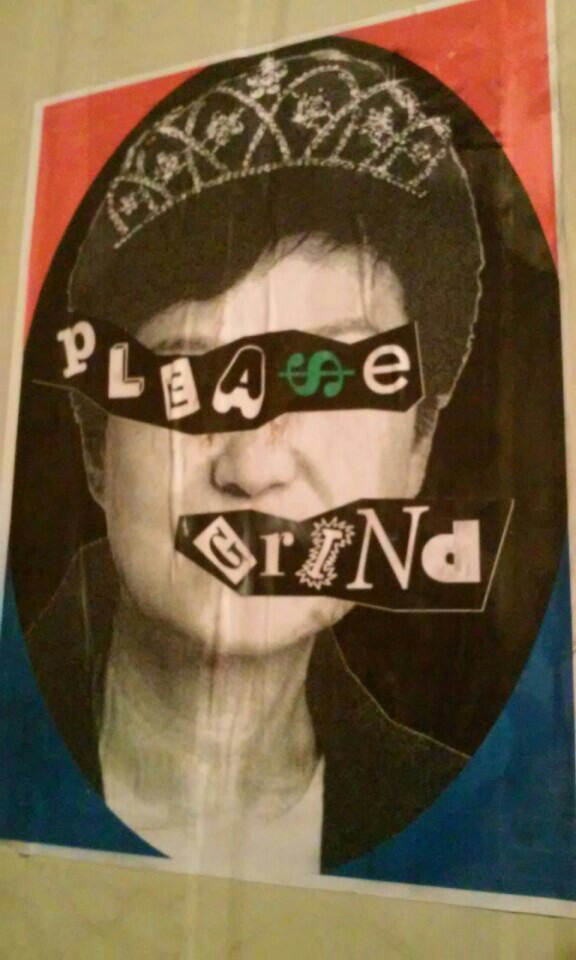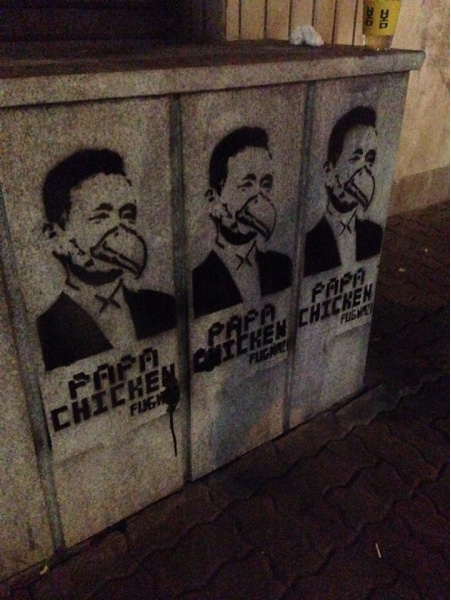Had an interesting discussion about how English literature can reflect working class conditions and by looking at certain literature in the 50s, 70s, 90s, we can see how the working class has changed over time. In other words, literature becomes a social mirror. This is not a novel methodology into the investigation of social structure and "cultural evolution" in defining the working class and investigating how the boundary has shifted over time. Nicole Toulis in her study of Jamaican women immigrating to England, not only draws on sociologist Stuart Hall but also looks to literature as indicative and reflective accounts of working class conditions and how black women were treated in England.
This approach is, in part, also my own approach to a study of hip hop. And while I appreciate the music's aesthetics (the beats, the rhythms, the lyrics), more importantly the music provides social commentary and is reflective of social conditions. If you look at the history of hip hop from the 70s, up to now, we can see how the music reflects accounts of police brutality, poverty, and racism (and for those who think that racism had somehow gotten better during the late 80s and 90s in the US and then for some reason got much worse in recent years would be grossly mistaken. Shit has been happening throughout and just because you become aware of it now doesn't mean the conditions were better when you were ignorant of it). Moreover, in spite of the violence and brutality, we see a celebration of "black culture" and life. Simultaneously, as we trace the histories, we can also see how the market and record labels usurp the music by restricting what the artist should/can rap about and how the DJ was cut out during the capitalization process. For example, "Gangster rap" started as a reflection of social conditions but then became a marketable enterprise for white suburbia. This also lead to the "Bling Bling" era where rappers would wax and wane about how much money they have, the cars, and the "bitches." As 50 cent and many other rappers have indicated, most of the shit they showed in the music videos were rented - the cars, the jewelry, and the women. What is refreshing today, is that we see a return of the conscious rapper. Dudes like Kendrick Lamar and Killer Mike are bringing social issues back into public eye. This isn't to say that MCs have not been doing this over the years, we can look to KRS-One, Talib Kweli, Mos Def, Lupe Fiasco, Immortal Technique, and many many more who have been talking about social issues for quite some time.
So, when I get some time, I'll try to go through each decade 80s, 90s, the 2000s, and the present decade and briefly note some of their reflections. But to jump it off, 'Rapper's Delight' by the Sugarhill Gang is largely considered to be the first album/record to hit the market after Kool Herc, Afrikaa Bambaata, and company give birth to the movement.
Wednesday, July 29, 2015
Monday, July 27, 2015
Miami officer cleared of taser death of young graffiti artist
Prosecutors say that the officer in question committed no wrong doing in the 18 year old’s death and the court agrees
Officer Jorge Mercado was cleared of any criminal wrongdoing in a Florida courthouse yesterday in the Taser death of 18 year old graffiti artist REEFA aka Israel Hernandez-Llach back in 2013.
According to the State Attorney’s office, Florida law gives officers the right to use “any” force, since officer Mercado says that Hernandez-Llach was running towards him. Mercado was on administrative leave following the incident, but is now said to be back on active duty.
According to reports, REEFA was painting on an abandoned McDonald’s in Miami Beach when he was approached by officers on August 6, 2013. Hernandez-Llach was ordered to stop, but ran through alleyways, a building and over a fence before he was apprehended.
Witnesses say that after he was Tasered by the officers, they laughed and gave each other high fives as he lay motionless on the ground where he was pronounced dead.
Jorge Estomba, a spokesman for the artist’s family, said in a statement, “The family will continue the fight to have justice on behalf of their slain son.”
-Sha Be Allah(@KingPenStatus)
source
Officer Jorge Mercado was cleared of any criminal wrongdoing in a Florida courthouse yesterday in the Taser death of 18 year old graffiti artist REEFA aka Israel Hernandez-Llach back in 2013.
According to the State Attorney’s office, Florida law gives officers the right to use “any” force, since officer Mercado says that Hernandez-Llach was running towards him. Mercado was on administrative leave following the incident, but is now said to be back on active duty.
According to reports, REEFA was painting on an abandoned McDonald’s in Miami Beach when he was approached by officers on August 6, 2013. Hernandez-Llach was ordered to stop, but ran through alleyways, a building and over a fence before he was apprehended.
Witnesses say that after he was Tasered by the officers, they laughed and gave each other high fives as he lay motionless on the ground where he was pronounced dead.
Jorge Estomba, a spokesman for the artist’s family, said in a statement, “The family will continue the fight to have justice on behalf of their slain son.”
-Sha Be Allah(@KingPenStatus)
source
Saturday, July 25, 2015
Friday, July 24, 2015
George Clinton on his Hip Hop Legacy
After all these years, what keeps you going?
The funk. When you love what you’re doing, you figure out your position and a way to keep doing it. It’s not hard when you like what you’re doing. I’m having fun being able to just be here. What gave me the energy this time was this fight again with the court [over my copyrights]. I vowed that I wouldn’t get sick or tired until I kicked they ass. The Mothership is going into the Smithsonian next year. For that music to be disrespected the way the record companies are trying to do—nuh uh. I’m not gonna stand by for that. I won’t be funkin’ in the name of that.
read more here
Wednesday, July 22, 2015
Charlamagne pens letter to racists
"White people, your silence on racial issues isn’t helping. If you’re not
speaking out against it, I have no choice but to assume that you’re
probably for it. White people have to denounce racism and prejudice when
hate crimes like the shooting in Emanuel A.M.E. in Charleston, S.C.
happen. Don’t act like this is an isolated incident of just a crazy
person. Don’t try to blame this guy’s actions on a dysfunctional
relationship with his parents. Don’t try to deflect from the actual
issue—which is this disease called racism—and say that it was an attack
on faith and not Black people. Don’t be like Meet The Press
host Chuck Todd and say, “We simply ask you to look at this as a color
blind issue. It’s simply gun violence.” How is this simply about gun
violence when Dylann Roof told us what this was about? He wanted to kill
Black people!!! Gun violence has nothing to do with this one, buddy,
because racist White people have been killing Black people for centuries
and the gun wasn’t always the weapon of choice. Anybody remember
nooses? How quickly we forget."
Read rest here
Read rest here
Snoop Dogg on 'Show me the Money'
Snoop Dogg appeared as a guest judge on 'Show Me The Money', a Korean tv show that aims to showcase the latest 'underground' rap talent.
source
source
Tuesday, July 21, 2015
Monday, July 20, 2015
From the New Yorker
| Hip-hop was born in the seventies and keeps evolving––radically evolving. As Kelefa Sanneh notes in his piece on Jay-Z and the rise of corporate rap, hip-hop has become a little bit like rock and roll in the nineteen-sixties: a term constantly invoked but elusive in its definition. The passage from Grandmaster Flash to Kendrick Lamar is as varied and rich as the one from Louis Armstrong and his Hot Fives and Hot Seven to Ornette Coleman. The form is too complex, too protean, to pin down. The New Yorker pieces presented today, samplings of what has been written about hip-hop in the magazine over the years, get at only small, glittering shards of the over-all diversity of the music and its language, its geography and creative personalities. There’s the great Missy Elliott, who was “energetically redefining the boundaries of rap music” when Hilton Als wrote about her, in 1997, and there’s Daniel Dumile, in his guise as MF Doom, observed by Ta-Nehisi Coates in a piece that is part memoir, about growing up listening to the music in West Baltimore, part Profile, and part critical appreciation. Odd Future’s steep ascent, beginning in 2007, took place almost entirely online, with the members becoming viral stars long before they sold albums. Their success, though, arose from a more old-fashioned source, which Sanneh describes as “an earnest devotion to the old-fashioned craft of hip-hop.” In his piece on Earl Sweatshirt, the group’s elusive front man, Sanneh writes about a music of subtle rhythms, unexpected rhyme endings, do-it-yourself beat-making, and engrossing storytelling. The pieces also include Ben McGrath on Hot 97, the radio locus of hip-hop, and Rebecca Mead on Lin-Manuel Miranda, who has somehow managed to meld American history, rap, and musical theatre. Just as the Public Theatre brought rock and roll to the stage with “Hair,” in 1967, Miranda, working at the very same theatre just months ago, unleashed his thrilling life of Alexander Hamilton in a hip-hop mode. As Mead makes plain, even an eighteenth-century Cabinet meeting can be material for a musical form first developed at block parties in the Bronx. |
| —David Remnick
articles:
The New Negro by Hilton Als
Where Hip-Hop Lives by Ben McGrath
Where's Earl by Kelefa Sanneh
All about the Hamiltons by Rebecca Mead
The Mask of Doom by Ta-Nehisi Coates
|
"Growing up hip hop"
“Growing Up Hip-Hop” is a 6 part docu-series, following the off-spring of iconic hip hop figures that will air on WE Tv later this year. The show wouldn’t be complete if the music legends themselves didn’t make appearances, Damon Dash, Rev. Run, Russell Simmons, Master P, El DeBarge and Pepa (of rap duo Salt & Peppa) will be on the show supporting their offspring. Here is the synopsis of the show:
“Hip hop is a hugely popular music genre, but beyond the songs it has become a lifestyle and has influenced a generation of young people. ‘Growing Up Hip Hop’ profiles what it’s like to be raised by hip hop legends, living in their shadow while trying to balance success and independence. This series will be right at home in our growing line-up focused on the authenticity and the challenges of real people and real relationships, and we can’t wait to share these distinctive original stories with WE tv viewers.”
Exarchia Street Art (Greece)
For a form of art so misunderstood as street art, it is only natural to find roof within a neighborhood equally – for many people- misunderstood. A lively area, constantly alerted and restless, mysterious and colorful. Exarchia, located in the centre of Athens.
In this film we collect moments of the urban scenery of Exarchia and the culture behind it. Exarchia’s walls and streets, interviews with art specialists, residents of Exarchia and of course street artists who talk with us about this subculture and controversial subject.
reference
Friday, July 17, 2015
Watching my name go by (1976)
"In 1974 Norman Mailer wrote an essay for Esquire called “The Faith of Graffiti”—a gripping and sympathetic investigation on the defacement of public and private property as an urban art movement of complex and fascinating depth. Mailer’s work eventually produced two collaborative pictorial books—The Faith of Graffiti and Watching My Name Go By
and Watching My Name Go By . The beauty of tagging and graffiti art is almost taken for granted today, especially since artists like Keith Haring and Jean-Michel Basquiat legitimized the genre to the art world in both its unlawful execution and its distinctive aesthetic, but Mailer was doing something new by recording the phenomenon as an organic outpouring of artistic expression, and this short 1976 documentary—also named “Watching My Name Go By”—is equally open-minded in its portrayal of graffiti artists and their critics. "
. The beauty of tagging and graffiti art is almost taken for granted today, especially since artists like Keith Haring and Jean-Michel Basquiat legitimized the genre to the art world in both its unlawful execution and its distinctive aesthetic, but Mailer was doing something new by recording the phenomenon as an organic outpouring of artistic expression, and this short 1976 documentary—also named “Watching My Name Go By”—is equally open-minded in its portrayal of graffiti artists and their critics. "
read the rest here
read the rest here
Wednesday, July 15, 2015
Tuesday, July 7, 2015
Graffiti as political expression for Korean youth
"Since the end of last year, graffiti satirizing President Park Geun-hye has been appearing in Daegu. No one drew graffiti lampooning the president during the administrations of former presidents Roh Moo-hyun (2003-2008) and Lee Myung-bak (2008-2013), but this kind of graffiti keeps showing up in Daegu, where President Park has a strong support base."
"When the prosecutors took over the case, they charged Kim with destruction of property and made a summary judgment, ordering him to pay a fine of 1 million won (US$890). But Kim insisted on a full trial, arguing that his graffiti was protected by the freedom of artistic expression."
“We never used to have any graffiti in Daegu. The reason we keep seeing it now is because young artists instinctively feel that society today is unnatural and abnormal. They were expressing those feelings through graffiti. If the police overreact each time it happens with these investigations, it will have a chilling effect on the freedom of artistic expression,” said Han Sang-hun, secretary general of the Daegu Artist’s Association.
read full article here
Monday, July 6, 2015
Sunday, July 5, 2015
Saturday, July 4, 2015
Friday, July 3, 2015
Kendrick Lamar responds to Fox news
“This is our music,” he later added. “This is us expressing ourselves.
Rather [than] going out here and doing the murders myself, I want to
express myself in a positive light the same way other artists are doing.
Not going out in the streets, go in the booth and talking about the
situation and hoping these kids can find some type of influence on it in
a positive manner. Coming from these streets and coming from these
neighborhoods, we’re taking our talents and putting ‘em inside the
studio.”
“The problem isn’t me standing on the cop car,” said Lamar. “I think his attempt is eluding the real problem, the senseless act of killing these young boys. I think for the most part it’s avoiding the truth. This is reality, this is my world, this is what I talk about in my music and you can’t delude that. Me being on top of a cop car that’s the perforamce piece after these senseless acts. Of course I’m going to be enraged by what’s going on out here. Of course im going to speak on it. But at the same time you can’t delude the overall message. Yea we’re angry about what’s going on. Yea we see what’s going on, but you can’t do that. You can’t take away our hope and our privilege that things are going to be okay at the end of the day.”
He points out to say hip-hop is not the problem. It’s the current situations that are happening in the world that are the problem.
source
Thursday, July 2, 2015
Wednesday, July 1, 2015
Nas: America is "selling a false dream"
"America has spent so much time, money & resources fighting wars
abroad and completely fell asleep at the wheel of the war brewing within
our cities, neighborhoods & blocks. We are supposed to stand for
freedom & equal opportunity. That’s supposed to mean MORE than just
words but the actions of late just don’t speak to what we are supposed
to stand for. This is BIGGER than BLACK and WHITE. This is about America
selling a false dream. Now we’ve obviously progressed since the
inception of this nation but we took our eye off the ball and it feels
as though things are moving backwards. As a black man, I find it
difficult to understand that our biggest export (our American culture)
comes from us. The people in the streets… The way the world dresses,
talks, what they listen to, what they watch… That all comes from us. How
can we be the ones responsible for America’s biggest export & fear
for our lives like we shouldn’t belong here. I don’t have all the
answers nor do I believe anyone does, but we need to have conversations
around how to improve as a nation. How do we show any ounce of progress
that keeps hope alive. This is too big of a problem to be solved
overnight but there needs to be some questions answered to get things
back on the track of righteousness. Amazing people died for this
country. We owe it to the past, present & future to come together
and move this country in the right direction. This is my home just like
it is anyone else’s. RIP CRISPUS ATTUCKS. FIRST MAN TO DIE IN AMERICA’s
FREEDOM WAR & HE WAS BLACK! GOD BLESS EVERY OUNCE OF INNOCENT BLOOD
SHED FOR THIS NATION & MY FAMILY.”
source
source
Hip Hop has done more damage than racism??
Subscribe to:
Posts (Atom)









